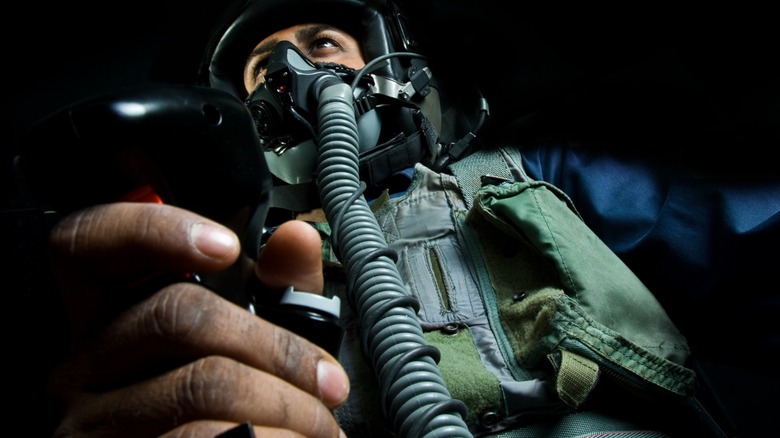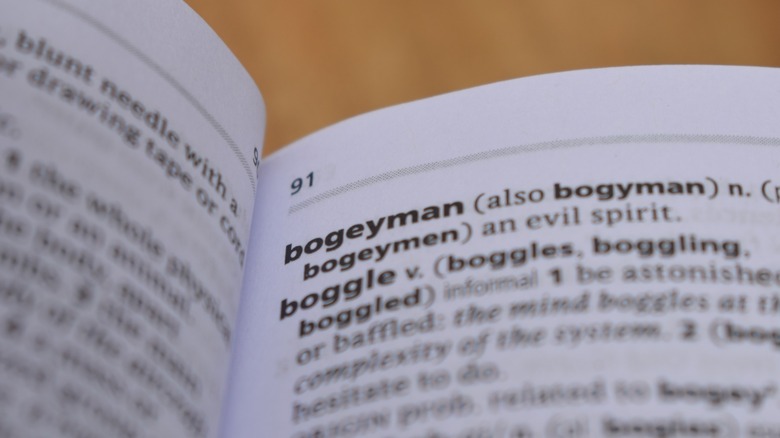What Does It Mean When Fighter Pilots Say They See A 'Bogey'
Yes, it can be fun to experience military movies, watching soldiers carry out complicated and delicate operations, but sometimes it can be difficult to understand when they use military jargon. While it can be easier to understand films that focus on infantry and special forces teams because there's usually a lot of physical context or hand signals, movies about pilots lean heavily into the lingo.
Even though movies may try to make it easy for the audience, there are still some key words they have to use and hope you can interpret it. One such popular words is "bogey" — it's almost as famous as when pilots confirm commands with "roger." In the skies, "bogey" is shorthand for an aircraft that has been spotted but not yet identified. It doesn't mean that it's automatically an enemy; a "bogey" is just an unknown.
That's why you'll often hear follow-ups like "bogey, 12 o'clock high" to indicate direction and altitude. Once radar operators or pilots confirm that the aircraft is hostile, the terminology changes, and the bogey becomes a bandit. If command gives clearance to engage, it may then be designated as hostile. Speaking like this may seem a little weird to civilians, but it helps pilots avoid ambiguity, and it passes the message across quickly.
How did the bogey word come to mean unknown in military applications?
The word "bogey" has Scottish and Middle English origins from the word bugge (also spelled bogge), meaning "frightening specter" or scarecrow. Digging deeper, bugge may trace back to Scots dialects like bogle, a regional term for ghost or goblin, documented around the early 1500s. Over time, "bogey" became part of broader folklore, such as in the figure of the "bogeyman," a fictional monster used to frighten children.
It was used for centuries to describe something shadowy or mysterious, and by the early 20th century, it carried naturally into military slang. When radar technology was introduced during World War II, operators sometimes saw faint or unexplained signals appear on their screens. These unknown contacts, which might vanish as quickly as they appeared, were compared to ghosts and nicknamed "bogeys."
The Royal Air Force popularized the term, first referring to these unknown blips as "angels," before "bogey" quickly spread to Allied pilots who needed a simple way to describe aircraft that had not yet been identified as friend or foe. The U.S. Air Force and Navy later adopted "bogey" as part of standardized brevity codes, which are concise terms used over radio to save time and prevent errors.

